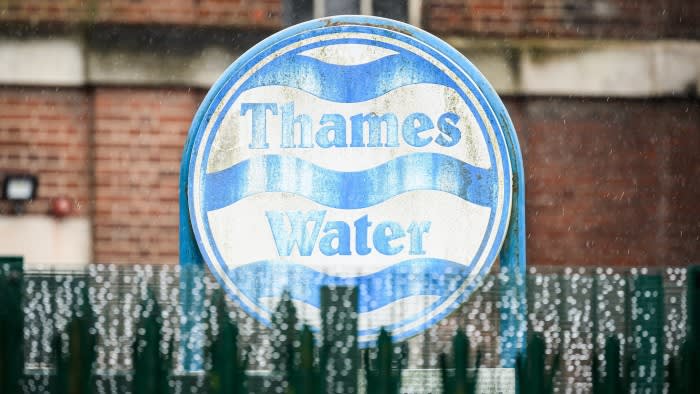
Unlock the Editor’s Digest for free
Roula Khalaf, Editor of the FT, selects her favourite stories in this weekly newsletter.
Some lenders to Thames Water would lose up to 40 per cent of their money under government contingency plans to nationalise Britain’s biggest water company dubbed “Project Timber”.
The utility, which supplies 16mn people — or about 25 per cent of the population of England and Wales — is struggling to stay afloat after its shareholders refused to put more money into the heavily leveraged business, which has been hit hard by higher interest rates.
The government first drew up contingency plans last year for the possibility of the company’s failure — although officials insisted on Thursday that a collapse was not imminent.
Under those plans, drafted by the Treasury and the environment department (Defra), Thames Water would be managed by an arms-length body — modelled on the one that built London’s Crossrail project — while ministers try to deliver it back into the private sector in the medium term.
The company could be split into a “London Water” company serving the capital and a “Thames Valley” business serving the rest of its area, according to the plans that were leaked to The Guardian newspaper on Thursday and confirmed by government officials.
While the net debt of more than £15.6bn within Thames Water’s so-called regulatory ringfence is supposed to be firewalled from the troubles of its parent company Kemble, bonds at the utility are now trading at deep discounts that reflect market concerns over potential writedowns.
The Project Timber analysis suggests that the smaller share of creditors, who hold “Class B” debt — and own about £1.6bn of the Thames Water operating company’s borrowings — would probably lose 35-40 per cent of their money.
That is in line with current market expectations given that a default at Kemble earlier this month sent the price of a second-ranking “Class B” bond plunging to little over half of its face value.
It is now trading about 60p on the pound, similar to the hit the government is now considering.
Meanwhile, the majority of bondholders, owed about £13bn, would take a lighter “haircut” of 5-10 per cent.
William Wade, a credit analyst at JPMorgan, warned earlier this month that haircuts of 15-25 per cent on the ringfenced debt were now a “plausible” outcome that investors should be wary of.
Shareholders, which include the pension funds Omers and USS as well as the Abu Dhabi and Chinese sovereign wealth funds, would take losses estimated at £5bn, a fact they acknowledged in March when they refused to put money into the company, which they now consider “uninvestable”.
Their resistance to rescuing the company by refusing to invest a further £3bn into the business — including £500mn due at the end of April — precipitated Kemble’s default earlier this month.
If the shareholders were to withdraw, it would potentially leave Thames Water without owners and running down its cash reserves. The company argues it has enough cash to last for 15 months, or until July next year.
Project Timber acknowledges the likelihood that Thames Water’s huge debts would probably end up on the government’s balance sheet. “That’s what happens with a nationalisation,” said one government official.
Yet the final decision on how to recognise those liabilities would still have to be formally made by the Office for National Statistics, an independent body.
If the government is forced to renationalise, the closest parallel may be Railtrack, the rail infrastructure company. That faced public opprobrium over safety issues and was eventually taken into special administration in 2002. The government eventually paid £500mn to shareholders and renationalised the business as Network Rail.
In 2014 Network Rail’s £30bn of debts were added to the government’s balance sheet after the ONS reclassified it as a public body.
Thames Water has paid out £10.4bn in dividends in the three decades since privatisation while racking up £14.7bn in net debt at the regulated company in the year to March 2023, according to research by the Financial Times.
Sarah Olney, Treasury spokesperson for the Liberal Democrats, urged the government to publish the contingency plans immediately: “Thames Water should have been put into special administration long ago, but the government is too weak to take on this disgraced polluter.”



